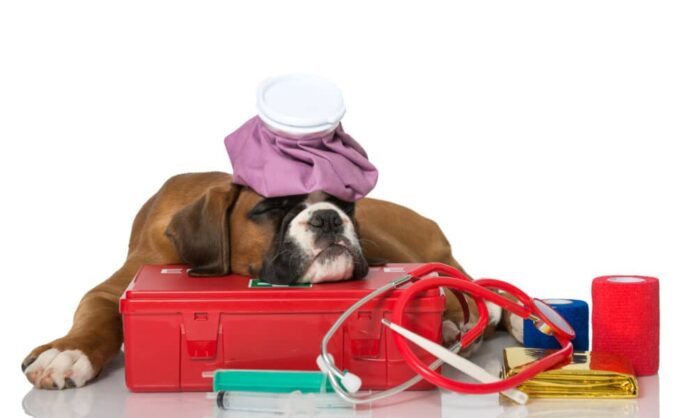Essential Dog First Aid Tips for Pet Owners
Medical emergencies can arise unexpectedly, and being prepared can ensure that you are ready to act decisively. For dog owners, knowing basic dog first aid can be vital in the event of an accident or sudden illness. While this knowledge should not replace veterinary care, it can significantly enhance your dog’s chances of recovery until professional help is available.
Understanding Dog First Aid
First aid refers to the immediate, short-term care provided at the scene of a medical emergency. Its primary goal is to minimize injury and pain, and to stabilize a victim’s condition until professional help can be obtained. Remember, first aid is not a substitute for veterinary care.
Recognizing an Emergency Situation
Identifying when your dog is in distress is critical. Here are some common emergency scenarios that warrant immediate attention:
- Difficulty breathing
- Uncontrolled bleeding
- Loss of consciousness
- Seizures
- Inability to move
- Fractured bones
- Persistent vomiting
- Diarrhea lasting more than 24 hours
- Sudden appetite changes
- Ingestion of toxic substances
If your dog exhibits any of these symptoms, contact your veterinarian or, if serious, transport your dog to the nearest animal hospital promptly.
What to Do in an Emergency
Here are essential steps to take if you find yourself in a medical emergency with your dog:
- Stay Calm: Your composure will help you assess the situation better and provide effective first aid.
- Evaluate the Situation: Ensure that you and your dog are safe before providing assistance. Assess your environment to avoid additional dangers.
- Check Your Dog’s Condition: Look for signs of responsiveness, vital signs, and any visible injuries.
- Contact the Vet: Inform your vet of the situation and follow their guidance while awaiting professional help.
- Administer First Aid: Based on your assessment, provide appropriate first aid. For example, if your dog is choking, perform the Heimlich maneuver. If they are suffering from heat stroke, cool them down gradually.
- Get to the Vet ASAP: Make sure to transport your dog to a vet as soon as you can.
Dog First Aid Kit Essentials
Being prepared with a well-stocked first aid kit can make a significant difference in emergency situations. While you can purchase pre-made kits, consider customizing your dog’s first aid supplies. Include the following:
Documentation
- Emergency contact numbers for your veterinarian and animal poison control.
- Your dog’s medical history and vaccination records.
The Basics
- Sterile gauze pads
- Elastic bandages
- Cool packs
- Pet thermometer
- Tongue depressors
- Hydrogen peroxide (3%) for cleaning wounds
- Medical-grade saline solution
- Disposable gloves
Items Specific to Your Dog
- Your dog’s medications
- E-collar, leash, and identification tags
- A carrier or blanket for safe transport
Basic Dog First Aid Procedures
While every emergency is unique, understanding basic dog first aid procedures can be invaluable. Here are some critical techniques:
1. If Your Dog is Choking
Signs of choking include difficulty breathing, pawing at the mouth, and blue-tinged lips. Follow these steps:
- Contact your veterinarian immediately.
- Examine your dog’s mouth for any visible obstruction.
- Perform the Heimlich maneuver if necessary.
2. If Your Dog is Not Breathing
Follow these steps if your dog is unresponsive:
- Ensure the airway is clear of obstructions.
- Perform rescue breathing as needed.
- Conduct CPR if breathing does not resume.
3. If Your Dog is Having a Seizure
Keep your dog safe during a seizure by:
- Ensuring they are away from hazards.
- Timing the seizure and calling your veterinarian if it lasts more than five minutes.
4. If Your Dog is Bleeding
For external bleeding:
- Apply pressure with a clean cloth or gauze.
- Keep the wound clean and bandaged.
5. If Your Dog is Poisoned
Symptoms of poisoning include vomiting and lethargy. If you suspect poisoning:
- Contact your vet or emergency animal hotline.
- Provide information on the substance and symptoms.
6. If Your Dog is Having a Heat Stroke
Look for signs like heavy panting or excessive drooling and act quickly:
- Move the dog to a shaded, cool area.
- Cool them down gradually with water.
Final Thoughts: The Importance of Dog First Aid
While we hope you never have to face a medical emergency with your pet, being prepared with knowledge and the right supplies can make all the difference. Remember, first aid is not a replacement for veterinary care, but it can be a critical step in ensuring your dog’s survival in emergencies. Stay informed, stay prepared, and most importantly, stay calm during any crises.












